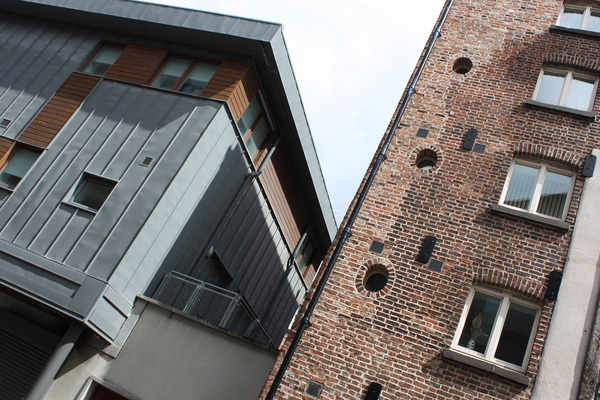Candidate: Ropewalks
Location: Liverpool, UK
Category: The Great Neighbourhood Award
Year: 2010
Summary
Rope Walks in Liverpool is a very strong contender for the Great Neighbourhood Award. It is a unique area of the city with a large number of historic warehouse buildings. It has increasingly become the centre for Liverpool’s night-time economy and creative industries.
The area owes much of its character and name to the craft of rope making for sailing ships that dominated the area until the 19th century. In the late 1990’s, the Liverpool Rope Walks Partnership helped the regeneration of the area through development, conservation, public realm improvements and training, employment and business support with a package of national, European and private sector funding. 815 new jobs were created. Among the major new schemes completed as late as 2004 were East Village and Manhattan Place. This was a £20 million mixed use scheme with a training centre for Liverpool Community College, apartments, workspace, shops and cafes. Rope Walks also contains Liverpool’s Chinese community. This boasts the largest Chinese Arch in Europe.
This is an inner urban area with convenient links to the city centre retail, employment and services as well as to health care and adjacent residential areas and educational establishments. It has a distinctive street pattern derived from the long narrow streets which were originally used to bind rope. This street pattern and the buildings along them are the key parameters determining change in the area. They provide a unique character with history, stories and a pedestrian scale which naturally militates against vehicular intrusion and natural calms local delivery and residential traffic. The structure and grain of the area provides a perfect setting for the development of small scale mixed uses, where leisure, business, arts and residential uses can exist side by side with few conflicts.
At the same time, this street pattern has been strategically altered in a few places to allow a greater degree of permeability – by making more north-south connections across the dominant east-west street system and using these new linkages to create new spaces. This has been very successful in creating new linkages which did not exist before between the housing areas to the south of Rope Walks and other mixed use areas to the north.
The Rope Walks Partnership(s) seem to have been highly successful in establishing conservation alongside high quality contemporary additions together with aspirational standards of public realm as the norm in the area. The ethos of conservation permeates the whole area but it doesn’t cut out the possibility of new interventions, and because the grain of the area is being retained in almost all new development, this leads to a dynamic mixed use area with a markedly human scale.
This conservation ethos is also an increasingly successful driver of change with regard to the problems of disused buildings being retained long term by a few landowners in the hope of uplift in value. The Council actively pursue these instances of wilful building neglect through repairs notices and through Compulsory Purchase Orders which enable other developers to acquire the properties and bring them back into use.
The sheer scale of change in Rope Walks over a 15 year period is remarkable. Even more remarkable is that this has been achieved through the retention and enhancement of the area’s character – which is still gritty, enclosing and complex, making a dramatic contrast with the new adjacent Liverpool One area (which failed in its recent bid to win the Stirling Prize) and with the Victorian City to the north and west.
This is clearly a case of a successful vision for an area being turned into reality and part of the success of this must in part be due to the City Council’s policies especially the Supplementary Planning Document dating from 2005. This document, which was the subject of extensive consultation, sets out general development principles for the Rope Walks such as land use typologies, safeguarding amenity, urban design, the historic environment, public realm, parking and traffic, security and stewardship as well as sustainable design, maintenance and management. Specific principles and guidance for the eight character areas identified within the nomination area deal with character and context, vision and building parameters in more detail. Clearly this has been a successful document.
In summary, the transferable lessons of excellence that can be learned by others from Rope Walks are:
- the appropriateness of street pattern, plot size, grain and building type to a fine grained pattern of mixed use
- the sensitive adaption of a historic street pattern to meet changing circumstances and uses through shared surfaces, new linkages and high quality materials
- the retention of the historic grain of the area and the successful integration of new building projects without disruption
- the ethos of conservation and reuse of buildings as being the principal way of accommodating development
- the use of Compulsory Purchase Orders in a Conservation Area as a means of achieving results in circumstances where owners are unwilling to sell – backed up by a developer-in-waiting who is prepared to finance the purchase
- the sheer scale of change in which a no-go area becomes a desirable place to live and work all with a 15 year time period
- the consistent architectural quality of new interventions and conservation work which is related to the quality of the Supplementary Planning Guidance produced for the area









